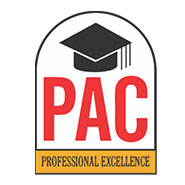SEO Content Writing
When it comes to creating stellar content, a somewhat delicate balance must be achieved. Unlike in the old days, you will not succeed if you strictly create content suitable for search engine algorithms. Real people also need to learn something from this. However, this hardly means that SEO no longer matters. In any case, it is more important than ever. These days, the best content gives SEO an edge, complies with the rules of the search engine and is compelling to the target audience.
Click Here: SEO Services
Without further ado, here are 20 tips for creating content that attracts readers, helps convey your marketing message and, most importantly, helps your site get a ranking:
- Know your audience: you cannot sell anything effectively without knowing your audience. This principle also applies to creating stellar SEO content. To create content that captivates and excites, you need to know what captivates and excites your target audience. For example, if your target demographic is approaching retirement age, don’t focus on things like parenting and career counseling. This will leave your audience cold and doom your efforts to failure.
- Create great headlines: After creating a large piece of content, you may want to give it a simple common name and end it. Guess what? Even if the work is really first-class, it is unlikely to gain momentum without a convincing title. Remember to include relevant keywords too.
- Make your content available for crawl: If presented with long, continuous blocks of text, even the most diligent of us will probably go the other way. This is especially true for reading on the Internet, where people expect content to be broken down into easily digestible parts. Make it easy by creating short, concise paragraphs and breaking them into keyword-rich subheadings.
- Use an accessible language: If you are not writing a technical copy for a very specific niche audience, always use an accessible style. Simply put, try to write the way you speak. How would you explain this topic to someone personally? For the first draft, imagine that this is what you are doing. You could even use the text-to-text application to make this step easier. In the next draft, you can polish it to make it more suitable for consumption on the Internet.
- Keep it factual: Nothing can detract from the quality of your content, like meaningless, useless, generic words that make up a little more than the filler. When it comes to quality content, every sentence matters. Fill in as many facts as possible. Each sentence should convey something important. This will make you an authority in your niche, forcing people to strive for every new publication that you publish.
- Stop worrying about keyword density: In the early days of SEO, ordinary knowledge dictated that high-rated content adhered to a certain keyword density. If you’re still in that mood, it’s time to shift gears. Overloading content with a small number of keywords makes it awkward, bulky, and awkward. Who wants to read this? More importantly, search engines relate to these kinds of things and often punish sites for participating in filling in keywords.
- Try LSI instead: Do not accept the previous paragraph to indicate that keywords no longer matter; they make! Today, however, search engines use hidden semantic indexing, or LSI, to understand the content of any page. Search engine algorithms use LSI to form links between different words. For example, if words such as “baby”, “hysteria” and “advice” are found, along with similar words, the algorithm uses its knowledge base to conclude that the content provides parents with tips on how to deal with terrible deuces. What does this mean for you? Instead of choosing a strict list of keywords and entering them into your content, use the main keyword database as a source of synonymous relevant terms that algorithms can use to correctly identify the meaning of your message.
- Use long-tail keywords: Think about how people search for things on the Internet. They usually try to be as detailed as possible in order to get the most relevant results. Long-tail keywords or keyword phrases match these search strategies. Include them in your content to make it more relevant and meaningful and to help your page rank higher.
- Give your sources: For obvious reasons, people are skeptical of everything they read on the Internet. If the information you provide is not the result of your personal experience, always indicate your sources. Make sure they are authoritative too; simply posting a link to a Wikipedia entry is not enough.
- Proofreading: Even if you are an experienced and experienced writer, typos happen to the best of us, and they can seriously distract even the most useful, interesting content. Do not stop passing it through a spell check; let the other pair of eyes look too.
- Fresh, new, constantly updated content: This is the main thing – it has been so for a long time, but search engines like fresh, new content. Readers too. At the same time, however, do not let quantity push quality into the background. Publishing a couple of well-written, thoughtful, engaging articles a week is much better than creating dozens of meaningless typos during the same period.
- Make it unique: It goes without saying, but we will repeat it for a good measure: online content must be unique. Avoid even unintentional plagiarism at all costs. To be more secure, use a service like CopyScape to make sure your piece doesn’t fit too close. Google and other major search engines fine sites for duplicate content, so this is an important thing.
- Design your questions around the questions that people ask: Use Google’s online tools to find out what people are looking for for specific keywords and key phrases. Often such queries are posed as questions. Seeing what questions people ask search engines, you draw inspiration for new articles, providing useful, relevant and relevant information to your readers.
- Complete the calls to action: Calls to action should not encourage people to buy something. They can simply ask people to share their opinions or ask a question to readers. In any case, try to wrap your snippets with calls to action to attract your audience more effectively.
- Stick to an active voice: When recording with an active voice, the subject of the sentence performs an action. Effective online content always uses an active voice. “The boy kicked the ball” is an example; Subject (boy) executed an exploit (kicked the ball). A passive voice makes bulky sentences that annoy readers. “The ball was hit by a boy,” there simply wasn’t the same spark.
- Craft Compelling Content: Even if you are not going to share your content on social networks, write it as if you were doing it. This is a great way to make it attractive and attractive.
- Write long articles too: Although effective content should be easy to scan and read, it does not need to be limited to a couple of hundred words. In fact, studies have shown that longer articles often provide more options. Of course, this is only true if the subject requires such a length. Simply put, do not think that you need to complete an informative, interesting post just because the number of words is approaching 1000 or more.
- See what works with analytics: As the old saying goes, don’t work anymore – work smarter. Do this with your content, paying attention to how it resonates with readers. Analytics can help you sort things out. What messages drive traffic? Which seem to fail? Using analytics, you can persistently hone your content establishment strategy.
- Include outbound links: Link building may not be the ultimate goal of SEO, as it was before, but search engines are still looking for links for tips on the authority and relevance of the page. When it makes sense, include outbound links to reputable senior sources. This is a great way to easily quote your sources too.
- Pay attention to the algorithms of Google: Google is constantly updating its algorithms and pays to keep up with these changes. A request for ignorance will not do you any good. Learn what flies with Google and what doesn’t, and always follow these guidelines.
What do all these items have in common? All of them require that you take the time to create content that resonates with readers, while adhering to the best SEO practices for search engines. The bottom line is that when you write great SEO content, slow and steady always wins the race.
Click Here: Digital Marketing Lahore




















